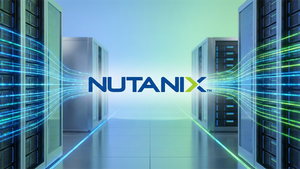
The cryptocurrency world is abuzz with anticipation as speculation mounts regarding the potential approval of a spot Solana (SOL) Exchange-Traded Fund (ETF) in the United States by late 2025. This development is widely seen as a pivotal moment that could unleash a torrent of institutional capital into the Solana ecosystem, fundamentally reshaping the market landscape for the high-performance blockchain. Experts are closely watching the regulatory dance, with many projecting a significant price appreciation for SOL, some even forecasting a high-growth scenario that could see its value soar to $750, or even higher, in the next bull run.
The prospect of a Solana ETF follows the groundbreaking approvals of Bitcoin (BTC) and Ethereum (ETH) spot ETFs, which have paved the way for traditional investors to access digital assets through regulated financial products. Should a Solana ETF come to fruition, it would not only legitimize SOL further in the eyes of mainstream finance but also provide unprecedented liquidity and exposure, potentially catalyzing an era of accelerated growth and adoption for the "Ethereum killer." This impending decision by the U.S. Securities and Exchange Commission (SEC) is thus not merely a regulatory formality but a market-moving event with profound implications for investors, developers, and the broader digital asset economy.
The Regulatory Road to Mainstream Adoption: Why a Solana ETF Matters
The journey toward a spot Solana ETF has been characterized by cautious optimism and strategic delays from regulatory bodies, mirroring the path taken by its larger crypto counterparts. However, recent developments and expert analyses suggest that the finish line is firmly in sight, making a late 2025 approval a highly probable scenario that could unlock significant value.
The U.S. Securities and Exchange Commission (SEC) has been the central gatekeeper in this process, delaying decisions on several spot Solana ETF applications. Key deadlines now extend to October 16, 2025, for applications from Bitwise (BITW) and 21Shares, and November 14, 2025, for Franklin Templeton’s (BEN) application. While these postponements might seem like setbacks, market analysts widely interpret them as the SEC conducting thorough due diligence rather than signaling outright rejections. In fact, many view these delays as a precursor to eventual approval, especially given the precedents set by Bitcoin and Ethereum ETFs. Bloomberg analysts, for instance, estimate a 90% chance of a Solana ETF approval by late 2025, with some predictions even pushing that probability higher. Prediction markets like Polymarket have also reflected this growing confidence, with odds for 2025 approval frequently ranging between 77% and 89%.
The successful launches of Bitcoin and Ethereum spot ETFs have created a powerful precedent. These approvals have demonstrated the viability and demand for regulated crypto investment vehicles, making it increasingly difficult for the SEC to deny similar products for other established and widely adopted cryptocurrencies like Solana. Furthermore, global regulatory bodies are already embracing Solana ETFs. Canada has already introduced both spot and staking Solana ETFs, and Brazil approved its first Solana ETF in August 2025. These international approvals could exert additional pressure on the SEC to follow suit, ensuring that U.S. investors are not left behind in accessing these innovative financial products. Key players in this unfolding narrative include major asset managers like Franklin Templeton, Bitwise, and 21Shares, who are at the forefront of submitting and championing these ETF applications. Their involvement underscores the significant institutional interest in bringing Solana to traditional investment portfolios.
Despite the prevailing optimism, the path to approval is not entirely without hurdles. Historically, the SEC has required a regulated futures market for an underlying asset before approving a spot ETF. While CME futures for Solana are now trading, satisfying this criterion, ongoing concerns about Solana's classification as a potential security by some, its network reliability issues (though significantly improved), and questions about its decentralization remain areas the SEC will scrutinize. However, the rapidly growing institutional demand for Solana cannot be ignored. Firms like Forward Industries (FORD), Upexi (UPXI), and DeFi Development Corp. have announced significant Solana treasury strategies, and Galaxy Digital (GLXY) reportedly acquired 2.31 million SOL tokens, valued at approximately $536 million. The approval and trading of a Solana staking ETF (REX Shares Solana Staking ETF) in July 2025, which has already accumulated over $150 million in assets under management, further solidifies the strong investor demand and paves the way for a spot ETF.
A New Era: Identifying the Winners and Losers in the Solana ETF Landscape
The potential approval of a Solana ETF is poised to send ripples across the financial markets, creating clear beneficiaries and posing challenges for others. This watershed moment is expected to channel substantial institutional capital, redefine market dynamics, and intensify competition within the broader crypto ecosystem.
The most obvious winner in this scenario is, of course, Solana (SOL) itself. An ETF would drastically increase its accessibility to a broader range of investors, including traditional institutions, financial advisors, and retail investors who prefer regulated investment vehicles over direct crypto purchases. This influx of capital is expected to boost SOL's liquidity and legitimacy, driving its price upwards. Beyond the direct asset, the entire Solana ecosystem stands to benefit immensely. Projects built on the Solana blockchain, ranging from decentralized finance (DeFi) protocols to NFT marketplaces and gaming platforms, will likely experience enhanced visibility, increased user adoption, and greater developer interest as the underlying asset gains mainstream recognition and investment. This could lead to a virtuous cycle of innovation and growth within the network. Furthermore, the asset managers behind the approved ETFs, such as Franklin Templeton (BEN), Bitwise (BITW), and 21Shares, will emerge as significant winners, capturing management fees and expanding their footprint in the rapidly evolving digital asset space. Traditional financial institutions that offer custody services for these ETFs, or those that integrate Solana into their wealth management platforms, will also see new revenue streams.
Conversely, the approval of a Solana ETF could present challenges for competing smart contract platforms, particularly those that have not yet secured similar regulated investment products or those that lag in institutional adoption. While Ethereum (ETH) has its own spot ETF, a Solana ETF could intensify the competition for institutional flows, especially given Solana's advantages in transaction speed and lower fees. Other Layer 1 blockchains like Cardano (ADA) or Polkadot (DOT), which are still awaiting their own ETF breakthroughs, might find themselves under increased pressure to demonstrate their institutional appeal and regulatory compliance. Moreover, some cryptocurrency exchanges that facilitate direct SOL purchases might experience a slight shift in trading volume as traditional investors opt for the more convenient and regulated ETF route. However, this impact is likely to be marginal, as direct ownership and staking will continue to attract a significant segment of the crypto community.
The ripple effects extend beyond direct competitors. Companies that are heavily invested in or reliant on other blockchain ecosystems without diversified exposure to Solana might see their relative market positions shift. This event could also underscore the importance of regulatory clarity and compliance for blockchain projects seeking mainstream institutional adoption. Projects that have proactively engaged with regulators and built robust, secure, and decentralized networks are more likely to attract institutional interest and potentially secure their own ETF pathways in the future. In essence, the Solana ETF approval will likely serve as a litmus test for which blockchain platforms are best positioned to bridge the gap between nascent crypto innovation and the established world of traditional finance, ushering in a new phase of institutional integration.
Redefining the Digital Frontier: Industry Impact and Broader Implications
The potential approval of a Solana ETF is not merely another product launch; it represents a significant milestone in the ongoing maturation and institutionalization of the cryptocurrency market. This event fits seamlessly into broader industry trends emphasizing greater regulatory clarity, increased institutional participation, and the mainstreaming of digital assets. Following the footsteps of Bitcoin and Ethereum ETFs, a Solana ETF would further cement the idea that cryptocurrencies are legitimate, investable asset classes, deserving of a place in diversified portfolios. It signifies a profound shift from a niche, retail-driven market to one increasingly influenced by the robust infrastructure and capital of traditional finance.
The ripple effects of a Solana ETF could extend far beyond the immediate Solana ecosystem, impacting competitors and partners alike. For competing smart contract platforms, the pressure to achieve similar institutional acceptance will intensify. This could spur further innovation in regulatory compliance, decentralization efforts, and network reliability across the blockchain landscape. Projects that can demonstrate robust security, high throughput, and a clear regulatory pathway will gain a significant advantage in attracting institutional capital. Conversely, those that struggle to meet these benchmarks might find themselves increasingly marginalized in the institutional race. For partners within the Solana ecosystem, ranging from infrastructure providers to dApp developers, the ETF could unlock unprecedented growth opportunities, as the increased institutional legitimacy and liquidity of SOL would attract more users and capital to the network. This could accelerate the development of new applications and services, expanding the utility and reach of the Solana blockchain.
From a regulatory standpoint, the approval of a Solana ETF would reinforce a consistent framework for evaluating digital asset investment products. It would suggest that the SEC is developing a more nuanced and predictable approach to cryptocurrencies, moving beyond initial skepticism towards a more integrated stance. This could lead to more streamlined processes for future crypto ETF applications, potentially paving the way for ETFs based on other prominent cryptocurrencies. However, it also underscores the SEC's ongoing focus on issues like market manipulation, investor protection, and the classification of digital assets. Historically, the journey of commodity ETFs, like gold ETFs, provides a compelling precedent. The approval of gold ETFs significantly democratized access to the precious metal, bringing it into mainstream investment portfolios and contributing to its price discovery. Similarly, the Bitcoin and Ethereum ETF approvals have already demonstrated this effect for digital assets. A Solana ETF would further validate this trend, signaling that digital assets are evolving from speculative curiosities into mainstream investment vehicles.
This event marks another critical step in the ongoing convergence of traditional finance and the crypto economy. It represents a vote of confidence from institutional players in the long-term viability and growth potential of decentralized technologies. As more regulated financial products emerge, the barrier to entry for institutional and conservative retail investors decreases, fostering greater capital flows and liquidity. This broader trend not only benefits individual cryptocurrencies but also strengthens the overall digital asset market, pushing it closer to widespread adoption and integration into the global financial system.
The Road Ahead: Navigating Solana's Post-ETF Landscape
The potential approval of a Solana ETF by late 2025 ushers in a new era of possibilities and challenges for the SOL ecosystem. In the short term, an approval could trigger an immediate surge in SOL's price, fueled by speculative trading and initial institutional inflows. This "buy the rumor, sell the news" dynamic, or potentially "buy the news" if the market reacts strongly to the validation, will likely be a defining feature of the immediate aftermath. Analysts predict that SOL could rapidly reach targets of $300-$400 in the months following approval, with some anticipating this by early 2026. This period will be characterized by heightened volatility and increased trading volumes as the market digests the implications of institutional integration.
Looking further out, the long-term possibilities are even more transformative. A Solana ETF would provide a consistent, regulated channel for substantial institutional capital to flow into the network. This sustained demand, combined with Solana's robust technological fundamentals—including its high transaction throughput, low fees, growing Total Value Locked (TVL), and an expanding ecosystem of dApps—could propel SOL into unprecedented price discovery. Experts like Jake Gagain project Solana to hit highs of $750 in the next bull run, citing its competitive advantages over Ethereum. Other ambitious forecasts, such as Tyler Hill Investing's projection of $669, or even $2,230 based on Fibonacci retracement levels, and Matt Hughes's long-term target of $1,100, highlight the immense upside potential. These optimistic scenarios are bolstered by favorable macroeconomic conditions, such as anticipated interest rate cuts, and increasing corporate adoption of blockchain technology.
However, the journey will not be without its challenges. Solana will need to strategically adapt to its newfound institutional spotlight. This includes ensuring continued network stability and security, addressing any lingering concerns about decentralization, and fostering even greater transparency. Market opportunities will abound, particularly for financial service providers looking to build derivative products around the Solana ETF, and for developers within the Solana ecosystem who will benefit from increased capital and user engagement. New challenges might include managing the potential for increased regulatory scrutiny on the underlying asset and ensuring that the network can scale to meet potentially massive demand.
Potential scenarios and outcomes are varied. In a highly bullish scenario, rapid ETF adoption combined with positive market sentiment could quickly push SOL towards the higher end of price predictions. A more moderate scenario might see gradual institutional accumulation, leading to steady, sustained growth. Conversely, if global economic conditions deteriorate or if unforeseen regulatory hurdles emerge, growth could be more subdued. However, the prevailing expert opinion leans towards a significantly positive trajectory, making the potential for Solana to become a top-tier institutional asset a strong possibility.
Conclusion: A New Dawn for Solana in the Institutional Landscape
The impending decision on a spot Solana ETF by late 2025 stands as a monumental event, poised to fundamentally alter Solana's position within the global financial system. The key takeaway is the overwhelming consensus among experts regarding the high probability of approval, a development that will undoubtedly open the floodgates for institutional capital, legitimizing SOL as a mainstream investable asset. This move is not just about a single cryptocurrency; it's a testament to the broader trend of digital assets integrating with traditional finance, driven by increasing demand for diversified investment opportunities and the inherent innovation of blockchain technology.
Moving forward, the market will likely react with significant enthusiasm to an approval, potentially leading to rapid price appreciation for SOL. The comparison to the impactful launches of Bitcoin and Ethereum ETFs serves as a powerful precedent, suggesting that Solana could experience similar, if not more aggressive, growth given its technological advancements and burgeoning ecosystem. This institutional embrace will solidify Solana's competitive standing against other Layer 1 blockchains and further accelerate its development and adoption across various sectors, from DeFi to enterprise solutions.
Investors should closely watch the SEC's announcements regarding the pending ETF applications, particularly the final deadlines in October and November 2025. Beyond the initial regulatory decision, attention should shift to the actual inflows into the ETF, the correlation between ETF trading volume and SOL's spot price, and Solana's continued network performance and ecosystem growth. The next few months will be crucial in shaping Solana's trajectory, potentially marking its definitive transition from a high-potential altcoin to a cornerstone of institutional portfolios, with price targets like $750 transitioning from ambitious projections to tangible realities in a new bull cycle.






